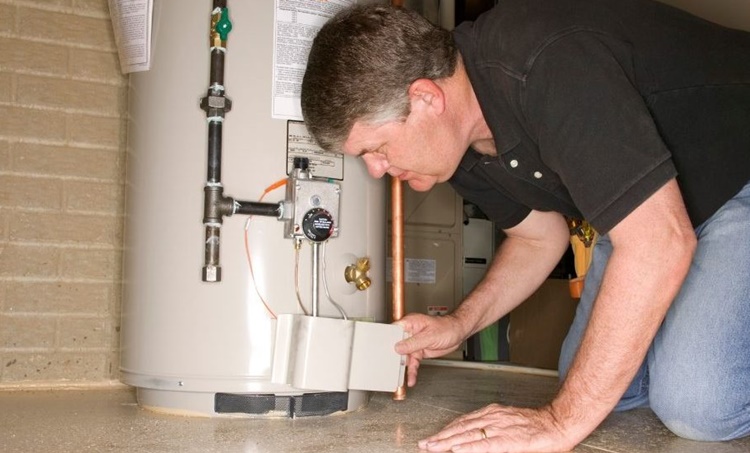Steps to Successfully Care for Your Home's Hot Water System
Steps to Successfully Care for Your Home's Hot Water System
Blog Article
This article following next about What Kind of Maintenance Do Water Heaters Need? is exceptionally compelling. Try it and draw your own personal findings.

Warm water is vital for day-to-day comfort, whether it's for a revitalizing shower or washing meals. To guarantee your hot water system runs efficiently and lasts longer, normal maintenance is crucial. This write-up offers sensible suggestions and understandings on just how to keep your home's hot water system to stay clear of disruptions and expensive fixings.
Introduction
Preserving your home's warm water system might seem daunting, but with a few straightforward steps, you can ensure it runs efficiently for several years to come. This overview covers everything from comprehending your warm water system to do it yourself maintenance suggestions and understanding when to call in expert aid.
Importance of Maintaining Your Hot Water System
Routine upkeep not just extends the life expectancy of your warm water system however additionally guarantees it runs efficiently. Overlooking upkeep can lead to decreased efficiency, higher energy expenses, and even premature failing of the system.
Signs Your Hot Water System Needs Maintenance
Knowing when your hot water system needs attention can protect against major issues. Look out for signs such as inconsistent water temperature level, strange sounds from the heating unit, or rustic water.
Flushing the Water Heater
Flushing your hot water heater gets rid of debris build-up, improving performance and lengthening its life.
Monitoring and Changing Anode Rods
Anode rods avoid rust inside the storage tank. Checking and changing them when worn is important.
Complicated Problems Requiring Professional Aid
Instances consist of major leaks, electric issues, or if your water heater is regularly underperforming.
Regular Expert Maintenance Benefits
Specialist maintenance can include thorough inspections, tune-ups, and making certain compliance with safety criteria.
Checking and Changing Temperature Setups
Changing the temperature level settings makes certain optimum efficiency and security.
DIY Tips for Upkeep
You can do several upkeep tasks on your own to keep your hot water system in leading condition.
Looking for Leakages
On a regular basis examine pipelines and connections for leakages, as these can cause water damage and greater expenses.
Understanding Your Warm Water System
Before diving right into maintenance jobs, it's valuable to understand the standard elements of your warm water system. Usually, this includes the water heater itself, pipelines, anode rods, and temperature level controls.
Month-to-month Maintenance Tasks
Routine monthly checks can assist capture minor concerns before they escalate.
Evaluating Stress Relief Valves
Checking the pressure relief valve guarantees it functions correctly and stops too much pressure accumulation.
Shielding Pipes
Protecting warm water pipelines reduces warm loss and can conserve power.
When to Call a Professional
While do it yourself upkeep is advantageous, some concerns require specialist knowledge.
Final thought
Normal maintenance of your home's warm water system is vital for efficiency, longevity, and price savings. By complying with these ideas and knowing when to seek expert aid, you can ensure a trustworthy supply of warm water without unexpected disruptions.
Water Heater Maintenance Tips
Test the TPR Valve
Shut off the power and the cold-water supply valve. Place a bucket under the pipe connected to the temperature-pressure-release (TPR) valve on the top or side of the tank. (This valve opens if the tank pressure gets too high.) Lift the valve’s tab to let some water out, then let go. If water keeps flowing, drain the tank partway, unscrew the old valve with a pipe wrench, and install a new one. Check the Anode Rod
Put a hose to the tank’s drain cock and let out a few gallons of water. Now fit a 1 1/16-inch socket onto the rod’s hex head on top of the heater (or under its top plate) and unscrew the rod. If it’s less than ½ inch thick or coated with calcium, buy a new one, wrap its threads with Teflon tape, put it back in the tank, and tighten securely. Use this segmented rod if headroom above the tank is limited. Drain the Tank and Wash Out Sediment
Drain the remaining water in the tank into the bucket, then stir up the sediment on the tank’s bottom by briefly opening the cold-water supply valve. Drain and repeat until clean water comes out of the hose. Close the drain cock, refill the tank, and turn its power back on. Adjust the Temperature
Find the temperature dial on the side of the tank and unscrew its cover. Adjust the dial to 120 degrees using a flathead screwdriver. For every 10 degrees the temperature is lowered, you can expect to save up to 5 percent in energy costs. Turn the water heater off or the thermostat down to its lowest setting if you plan to be away from home for more than three days. Insulate the Pipes
Buy some self-sticking 3/8-inch-thick foam pipe insulation that matches the pipes’ diameter. Slide the foam over the hot-and cold-water pipes as far as you can reach. Insulating the cold-water pipe prevents condensation in summer. Peel the tape and squeeze the insulation closed. If the pipe is 6 inches or less from the flue, cover it with 1-inch-thick unfaced fiberglass pipe wrap. https://www.thisoldhouse.com/plumbing/21016402/how-to-maintain-a-water-heater

We had been made aware of that report on How to Maintain Your Water Heater & Prolong its Life through an associate on another blog. For those who appreciated our blog posting kindly make sure you remember to share it. Many thanks for being here. Please come by our website back soon.
Schedule A Service Report this page